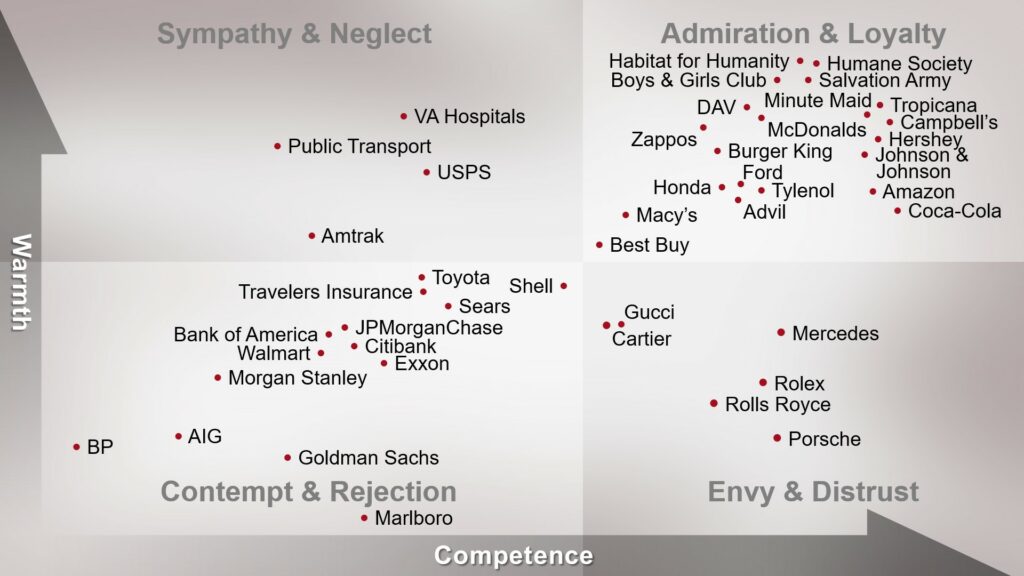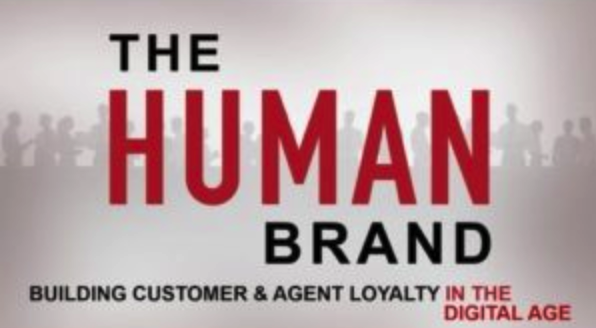It’s Time to Change How We Build Companies & Brands

I first suggested that Brands Are People Too in a Forbes article back in late 2010. At the time, the notion that commercial brands bore any resemblance to human beings was a fairly obscure idea. However, a lot has changed since then. A Google search for “human brand” now returns nearly 140,000 sources of information on this topic. In fact, doing business in more “human” ways has arguably become mainstream.
But this observable shift in language about brands and humans is just the tip of the proverbial iceberg. Over the past ten years, there has been a surge in academic research around the world on this subject. Many of these studies applied well accepted models of human social psychology to better understand customer interactions with companies and brands.
One of the earliest of these studies was a 2012 research paper by professors Nicolas Kervyn, Susan Fiske and I. It showed that the same human perceptions and emotions that underlie social stereotypes and biases were also predictive of customer purchase intent and loyalty for companies and brands. Shortly afterward, this work grew into an award-winning book entitled, The HUMAN Brand: How We Relate to People, Products & Companies.

Since then, over 600 other related academic papers have been published. These papers have cited, validated and extended the findings of our original study to a wide variety of business, marketing and communication issues. A comprehensive summary of key findings across all these academic studies was recently published in Consumer Psychology Review.
There is a notable and inescapable conclusion from this large stream of research. Humans perceive, interact and become loyal to companies and brands of all kinds in pretty much the same way we do other people: on the basis of their warmth and competence.
From one perspective, this now definitive finding is not entirely surprising. Through millions of years of evolution, humans became highly adapted and attuned to interacting with other humans. As a result, we have a tendency to perceive everything around us through a people-centered lens. We ascribe human names, characteristics and tendencies to all manner of inanimate objects. But in business and academia, companies and brands have long been considered to be abstract objects that are distinct and independent from the humans who create and manage them. Now, extensive peer-reviewed research on consumers’ perceptions of brands and companies has increasingly rendered that belief obsolete.
Instead, a great deal of evidence suggests that people were essentially the first “brands” and faces the equivalent of the first “logos.” As such, all the branded trade and commerce that humans have engaged in for the last several thousand years is likely just an adaptation of the way that humans were wired by evolution to interact with one another. So our notion of brands is deeply rooted in humans, since we use the same perception mechanisms and thought process to interact and form loyalty to each.
This simple but foundational finding has big implications for brands and companies of all kinds. Here are just a few of them:
1. Customers Actually Form Loyalty to the People at Companies and Brands: When making warmth and competence judgments, customers are processing what they know or can infer about the people at the companies and brands they do business with. This happens even if they never have direct contact with them. So to build loyalty, customers need to know about the people at companies and brands, as well as what they stand for. This is just as important as the products and services they offer.
2. Competence is Required, but Warmth is the Primary Driver of Customer Loyalty: Customers expect products and services to be reliably competent and effective. However, these are rarely sufficient to create lasting loyalty. Rather, customer make judgments about intentions of companies and brands based on their policies and practices. Only those perceived to be warm, honest and worthy of their trust earn lasting loyalty.
3. Most Companies & Brands Fall Short of Customers’ Warmth Expectations: Unfortunately, most companies and brands perform well below customer expectations for honesty, transparency and trustworthy intentions. As a result, loyalty within most industries and categories is lower than ever. This is causing companies and brands to chase new customer transactions with greater reliance on price, rather than experiences that inspire trust.
4. Digital Commerce and the Pandemic Have Disrupted Warmth & Competence Perceptions: For most of human history, commerce was conducted face to face. Customers relied on facial expressions, body language, appearance and personal relationships to assess the warmth and competence of merchants. But over the past two decades, commerce has become increasingly digital and transactional. What’s more, the pandemic has substantially reduced in-person shopping and gatherings for the past two years. This has made commerce even more remote and impersonal. In response, companies and brands must find new ways to demonstrate warmth and competence to earn the trust of customers and build lasting loyalty.
Key Takeaway: As the COVID-19 pandemic subsides, we need to change the way we think about and build companies, brands and customer relationships. Most of the systems and processes we use to engage in commerce were built with an emphasis on competent and efficient execution of transactions. As a result, thoughtful customer experiences that inspire trust and lasting loyalty are rare.
In the post-COVID world, indifferent customer experiences won’t be tolerated for long. We’re not going back to the customer expectations of 2019. Moving forward, the business policies, practices and technical systems we engage customers with must be built differently. They must focus more on conveying the warm, trustworthy and honorable intentions of the business people behind them. Failing to do so could be the difference between thriving or struggling to simply survive!

















